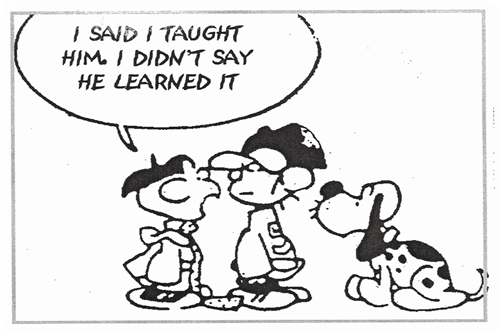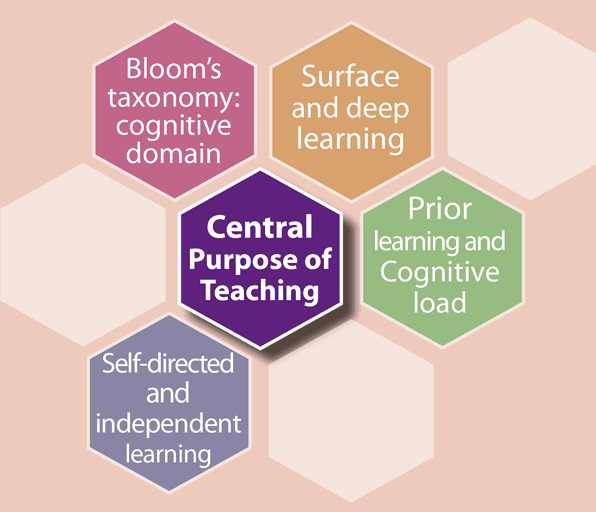Introduction
Understanding the central purpose of teaching (CPT), the main and singular goal of teaching, along with the implications, will allow us to be more intentional about our teaching, to identify and distinguish between more effective and less effective teaching, and to improve by keeping the end in mind.
Learning Objectives (what you can reasonably expect to learn in the next 15 minutes):
- Classify statements that express or do not express the CPT
- Explain the important elements of the CPT
- Describe some implications of embracing the CPT.
To what extent are you now able to meet the above objectives? Please record your self-assessments. (1 is not at all and 5 is completely)
To get started, please take a few moments to consider how you now at this moment might express the CPT. Write it out here or somewhere handy so you can refer back to it shortly:
Central Purpose of Teaching

There are many ways to express and in fact many beliefs about the central purpose of teaching (CPT). The one offered here can be written in this (and other ways): to help someone learn.
The focus is learning. When we teach we are trying to facilitate and promote learning in those we teach. Consider these situations: First, a person (young, old, or in-between) finds the necessary resources and time to learn something on their own (how to ski, calculus, meditation, or the pathophysiology of diabetes.) That person learned entirely without direct teaching support. This we would applaud and hold up as a model of what we might call self-directed learning. Second, consider a not uncommon situation where someone is teaching (and maybe a lot of teaching activity) but that no one is learning anything! “I thought you said you taught your dog to add.” “Yes. I said I taught him but I did not say he learned!” With humans this would be a bizarre and troubling situation. Something went wrong! We know tacitly that teaching without learning is not quite right.
Teaching then helps or facilitates this learning process for others which could and sometimes does take place without direct and intentional teaching. Teaching should make learning better and faster but teachers can’t learn for others (though as we all know teachers learn much from teaching). Frightening (or freeing, depending on your perspective and dispositions) is the fact that teaching is the secondary activity in the classroom; the most important thing going on is the learning, what happens to and within our learners.
Teaching aids the learning not of the teacher primarily but of others: teachers help others to learn. These others we teach are human beings with goals and aspirations, existing knowledge from prior learning (which, as we also know, may or may not be entirely accurate) and physical attributes and limitations. Teaching is a human activity of one person connecting with another about the subject matter at hand.
So now, let's check for understanding:
Check for Understanding
Please complete the self-assessment below OR as part of the 5-minute anonymous Cell evaluation (our preferred option)
By submitting the evaluation you agree that we can use your answers (all anonymous, of course) grouped with all the others to help us improve.
Self-assessment
To what extent are you NOW able to meet the following objectives? (0 is not at all and 5 is completely)
To what extent WERE you able the day before beginning this CORAL Cell to meet the following objectives? (0 is not at all and 5 is completely)

Thank you for completing the self-assessment and Cell evaluation. It is very important to us to determine how we are doing. We really want to improve.
Thanks again, and come back soon!
The CORAL Cell Team
For Further reading:
Barr R, & Tagg J. From Teaching to Learning: A new paradigm for undergraduate education. Change 1995;27(6):13-26.
